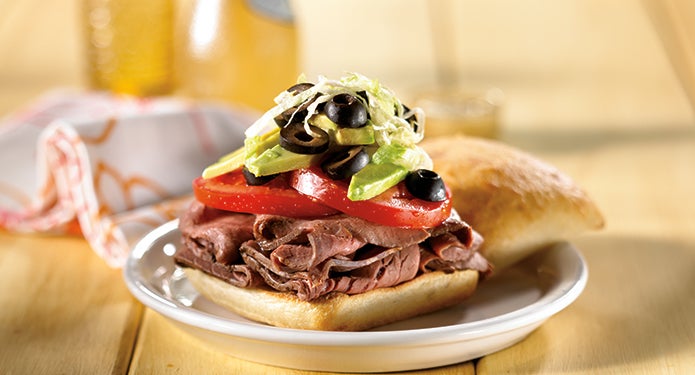In today’s multicultural landscape, it is becoming more important for food service managers to understand the different dietary practices followed by Canadians. As the Canadian population continues to grow and diversify, religious dietary restrictions, such as kosher and halal, are increasingly followed. During the last decade, the market for kosher food has increased by 15% on a yearly basis in North America. The global halal market in Canada is a rapidly growing industry, driven by the increasing Muslim population in the country and the growing awareness of the benefits of halal products among non-Muslim consumers. The Canadian halal market is valued at around $1 billion and is expected to reach $1.5 billion by 2023, driven by factors such as population growth, rising disposable incomes, and increasing globalization (HMA Canada, 2023).
Strict laws and regulations governing these two types of diets outline what foods a person can and cannot eat and how to prepare them. To help understand these religious practices, each diet will be examined in greater depth.
The Kosher Diet
Food is kosher when it meets dietary requirements outlined by Jewish law or kashrut, making it acceptable for people observing those laws to eat. A more rigorous level of kashrut would mean that the meals need to be prepared in a kosher kitchen where all cooking and eating utensils as well as equipment need to be dedicated to either a dairy or meat group. For facilities that cannot accommodate this, there are prepared meals that can be served for those residents and don’t require any cooking equipment at all. Just heat and serve with disposable cutlery. The role of a kosher supervisor is to ensure the food is kosher and remains kosher after preparation or processing. A kosher symbol on a food product means that the product has been certified kosher from an agency. Kosher food is divided in 3 groups: meat, dairy and pareve (neither meat nor dairy). Only animals that chew their cud, have cloven hooves and are free from disease are considered kosher. These restrictions also apply to animal flesh, organs, milk and any by-products. Domesticated fowl are considered kosher. Seafood with fins and scales are also allowed. According to Jewish law, meat and dairy products cannot be combined or eaten at the same meal. Many people wait between three to six hours after eating a meal containing meat to have dairy products. Pareve foods do not contain any meat or dairy, therefore can be eaten with either one.
Examples of foods allowed:
- Meat: Kosher beef, game, lamb, chicken, turkey, duck, goose and fish
- Dairy: Products Milk, cheese, yogurt (from a kosher certified animal)
- Parve Fruits, vegetables, eggs, fish*, cereal products, nuts, grains
*Fish cannot be placed on the same plate as meat – however, it can be consumed during the same meal.
Examples of forbidden foods:
- Pork, reptiles, amphibians and insects
- Shellfish (including lobster, oysters, mussels), shrimp and scallops
- Animal products or by-products made from any non-certified animal
The Halal Diet
Islamic dietary laws define which foods are halal. Halal foods are lawful and permitted to be eaten by those observing Islamic teachings. Muslims are not allowed to consume foods or beverages that are Haram, or forbidden. Foods that carry a halal symbol on their packaging have been approved by an agency and are certified to be free of any forbidden components or ingredients. Halal claims on the nutrition label or the packaging must include the name of the certification body.
Examples of foods Halal (allowed) and Haram (forbidden):
Cereal products Halal:
- Cereal products not containing haram ingredients
- Rice
- Pasta
Cereal products Haram:
Cereal products containing haram ingredients (alcohol animal fats, vanilla extract)
Fruits and vegetables Halal:
- All (frozen, canned, raw, boiled, butter, vegetable, oil)
- Juice
Fruits and vegetables Haram:
- Fruits and vegetables containing Haram ingredients (alcohol, animal fats, gelatine, bacon)
Milk and dairy Halal:
- Milk
- Yogurt, cheese, and ice creame made with bacterial culture without animal rennet
Milk and dairy Haram:
- Cheese, yogurt and ice cream made with animal rennet, vanilla extract, gelatine, pepsin, or lipase
- Meats and alternatives Halal:
- Certified meat and poultry
- Seafood
- Nuts
- Eggs
- Peanut butter
- Tofu
- Halal deli meats
- Legumes
Meat and alternatives Haram:
- Pork and port products (ham, sausage, bacon)
- Non certified meat and poultry
- Any product prepared with alcohol or animal fats
It is often difficult to classify processed food as strictly halal or haram because of the ingredients they contain. Therefore, it is important to check the product’s label or packaging to see if it is halal certified. If no certification is specified, verify the list of ingredients and look for haram or forbidden ingredients. Some examples include: gelatin, lipase, pepsin, alcohol, vanilla extract (pure or artificial), animal fats, animal blood, animal rennet, mono and diglycerides from an animal source, whey powder, sodium stearoyl lactylate (SSL) or L-cysteine.By having food items and products available in your establishment that are allowed according to these religious principles, you will be able to satisfy the needs of a larger group of clients or customers.
References:










